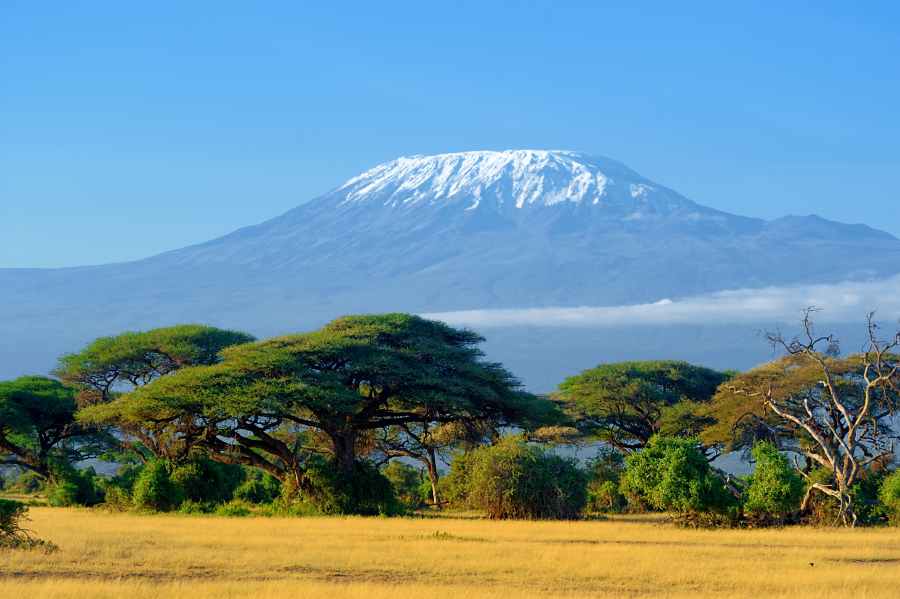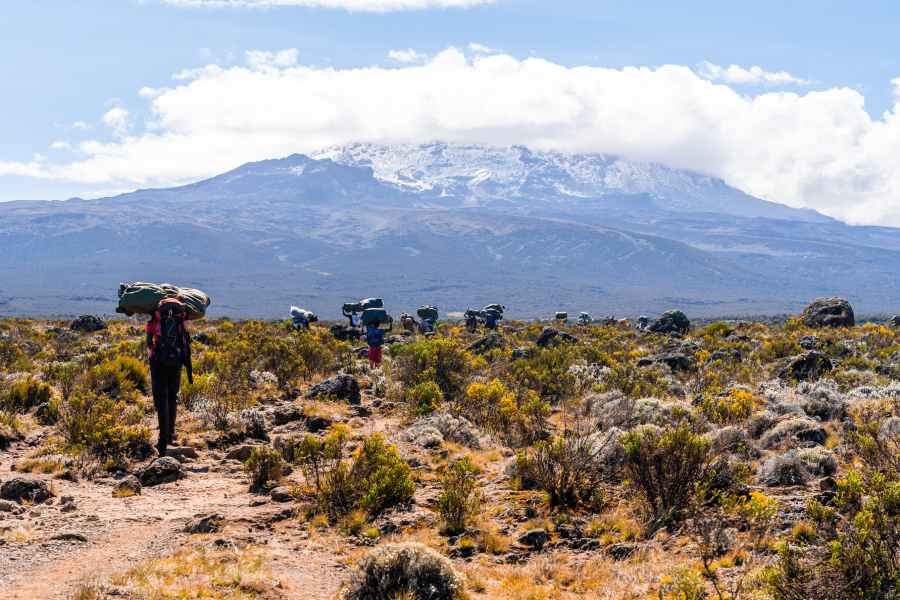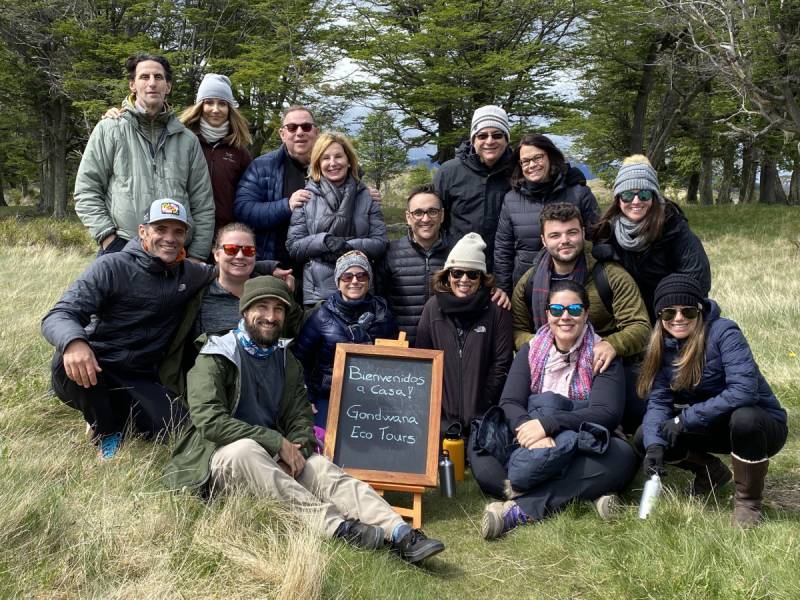Awesome Tips To Climb Mount Kilimanjaro
Download Travel Details >PRIVATE & SMALL GROUP TOURS TO THE WORLD'S BEST DESTINATIONS
Join Us For A Safari In Tanzania

When Is The Best Time Of Year To Hike Mount Kilimanjaro?
 Kilimanjaro’s location on the equator means that it is possible to climb Mount Kilimanjaro any time of the year. However, certain months are characterized by colder weather, more rain, or significant snowpack at the summit. Keeping these variables in mind will help you plan your summit attempt!
Kilimanjaro’s location on the equator means that it is possible to climb Mount Kilimanjaro any time of the year. However, certain months are characterized by colder weather, more rain, or significant snowpack at the summit. Keeping these variables in mind will help you plan your summit attempt!
Ask The Experts: When Should You Climb Kilimanjaro?
Experienced climbers will say that the best time of year to hike Mount Kilimanjaro is during the warmest and driest months, from December to mid-March and from mid-June to the end of October. Be forewarned, however, that although these are the best times to climb the mountain in terms of weather, they are also peak tourist season in Kilimanjaro National Park and the busiest months for climbers.
A quick breakdown of climbing conditions for Kili by month is listed below:
- January and February are the warmest months and the best time to trek Kilimanjaro. You can expect clear, sunny skies in the morning and evenings; however, clouds may appear in the afternoons and you may experience a quick rain shower or two during your climb! This is one of the best times to go if you are interested in capturing your experience by photographing the journey.
- The long rainy season starts at the end of March and continues through early June. Therefore, we do not recommend climbing Kilimanjaro during March, April, or May. The trails can be very wet, muddy, and snowy during this time and it is not very enjoyable to climb in the rain. The cloud cover also means that you will miss out on the spectacular views and photo opportunities. On the other hand, if you do organize your trek during the rainy season, you will be able to avoid the crowds that often clog the trail!
- June marks the transition from the rainy season to the dry season. However, hikers should still be prepared for cold temperatures and cloudy skies. July brings warmer daytime temperatures but marked cold spells at night.
- August and September are the two peak months for climbing on Kili. Although the trails will be crowded with other climbers, it is the migratory season for wildlife and a good time to add a safari to your trip if you want to see herds of elephants and zebras making their way across the savanna.
- October is considered the off-season, but the weather is still very good for hikers. Plus, most of the tourists have left, so you will have many of the trails to yourself. An October trek means you will also beat out the rainy season in November and December.
What Is The Best Way To Climb Kilimanjaro?
Seven routes lead up Mount Kilimanjaro to the summit. Each route presents its challenges and difficulties for climbers, and some are more beginner-friendly than others. The newest route, the Lemosho Route, offers the rare opportunity for hikers to become acclimatized to altitude before starting their climb. This route starts on the western slope of the mountain and then traverses around to the eastern side of the mountain for the summit attempt.
Lemosho is a meandering route that allows you to see more of the landscape and experience more climate zones before heading up to the summit. The route naturally gives you the best acclimatization experience of any route on the mountain by taking longer to get to the top. The gradual ascent allows hikers to adapt to the altitude more effectively, reducing the risk of altitude sickness along the way. This route has a very high success rate with beginner hikers as well as more seasoned professionals!
Five Fun Facts About Kilimanjaro's Lemosho Route
If you choose the Lemosho Route to climb Mount Kilimanjaro, you're in for breathtaking views of the surrounding landscape as well as diverse flora and fauna on the way up. The Lemosho Route is one of the most scenic routes on Kilimanjaro. It is also one of the longer routes, taking 7 - 9 days to complete, which allows for better acclimatization and higher success rates.
- The Lemosho Route approaches the summit from the western slope of the mountain.
- The trail on the Lemosho Route is less steep and more gradual, making it a good choice for trekkers who need a more gradual ascent.
- The Lemosho Route is considered a more remote and less traveled route, perfect for those seeking a more solitary trekking experience.
- The Lemosho Route offers panoramic views of the Shira Plateau, Lava Tower, and the Great Barranco Wall.
- Wildlife sightings are more common on the Lemosho Route compared to other routes, with the chance to spot a variety of birds and larger mammals.
If you climb Mount Kilimanjaro using the Lemosho Route, you will merge with the Machame Route on the third day of your trek. This will allow you to experience the busier Machame trail briefly before veering off onto a quieter path. This junction point also marks the convergence of trekkers from different routes, which can add a sense of camaraderie and community to your journey.

A Guided Trek Up The Mountain
Almost 30 years ago, the government of Tanzania made it a law that anyone climbing Kilimanjaro would need to be accompanied by a registered and licensed guide. Trekkers need to register with the Parks Authority before setting out and sign in at each camp to minimize wild camping or using caves for shelter. You also need to have a permit to climb Kili, and securing one is only possible through a certified tour company like Gondwana Ecotours. The permit will cover the park entrance fees, which also must be paid for you to enter the park.
Ironically, having a guide is one of the best ways to climb Kilimanjaro. Although it is required by law, a professional and experienced guide is often the secret to a successful summit attempt. Guides are trained to recognize altitude sickness and help a hiker deal with it appropriately, as well as more serious medical emergencies. Guides are also very knowledgeable about the mental stamina needed to make such a rigorous climb and can keep a group’s spirits high when physical stamina runs low.
Not to mention the simple fact that a guide’s crew is necessary to carry all the food, water, and equipment you will need for camping during your adventure. Relying on the expertise and support of your guide and crew can greatly enhance the overall safety and enjoyment of your camping experience in the great outdoors. Guides also can provide valuable insights into the local flora, fauna, and terrain along the way.
Reaching New Heights On Kilimanjaro's Peak
No matter what time of year you pick to climb Kilimanjaro, you are sure to have an unforgettable adventure. The varying climates and landscapes along the trek offer a unique experience with each season, ensuring that every climb is a one-of-a-kind journey. From stunning vistas to snow-capped peaks, the lure of this magical mountain is strong. Start planning your trip now for a once-in-a-lifetime experience in Tanzania!

